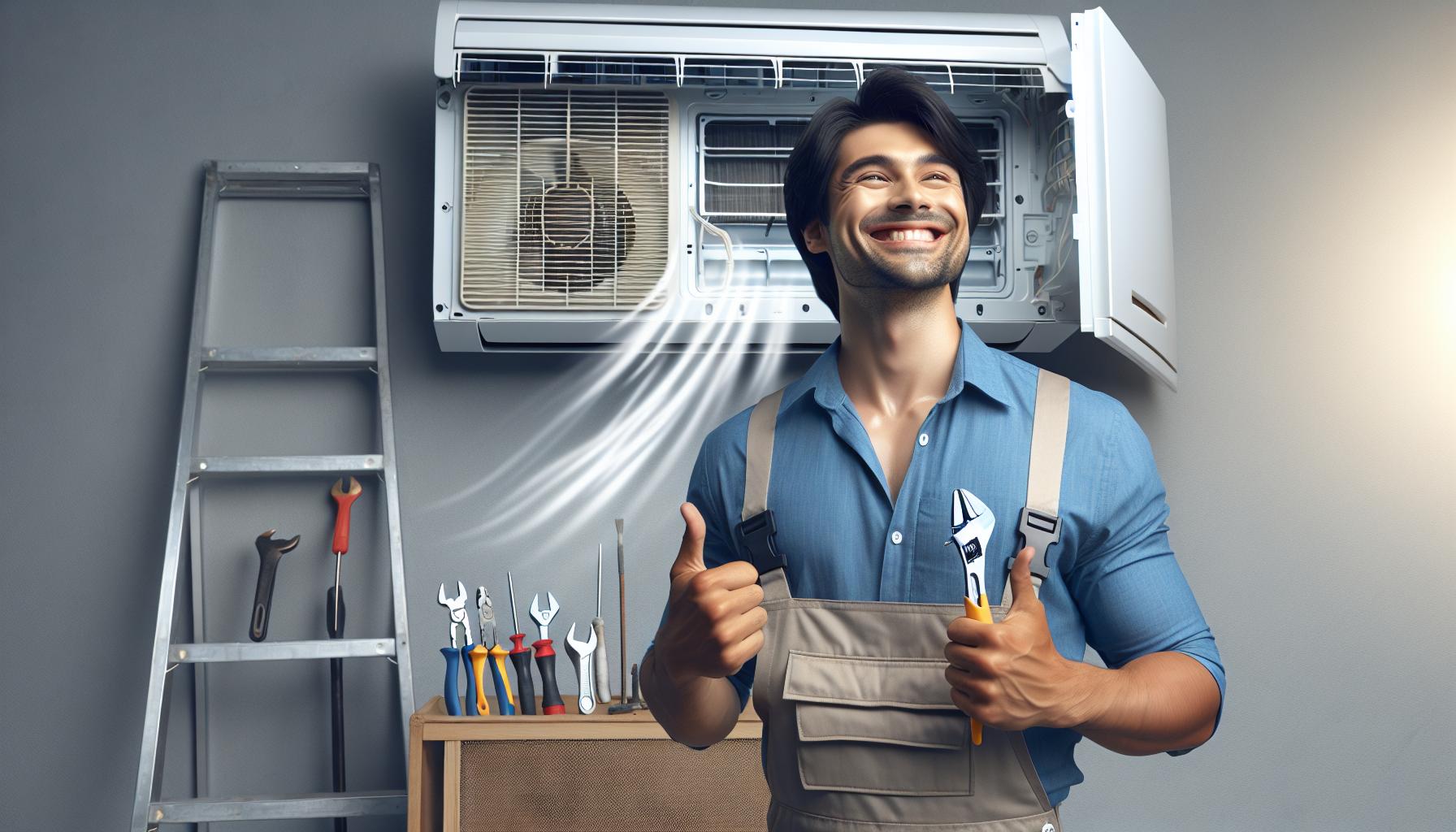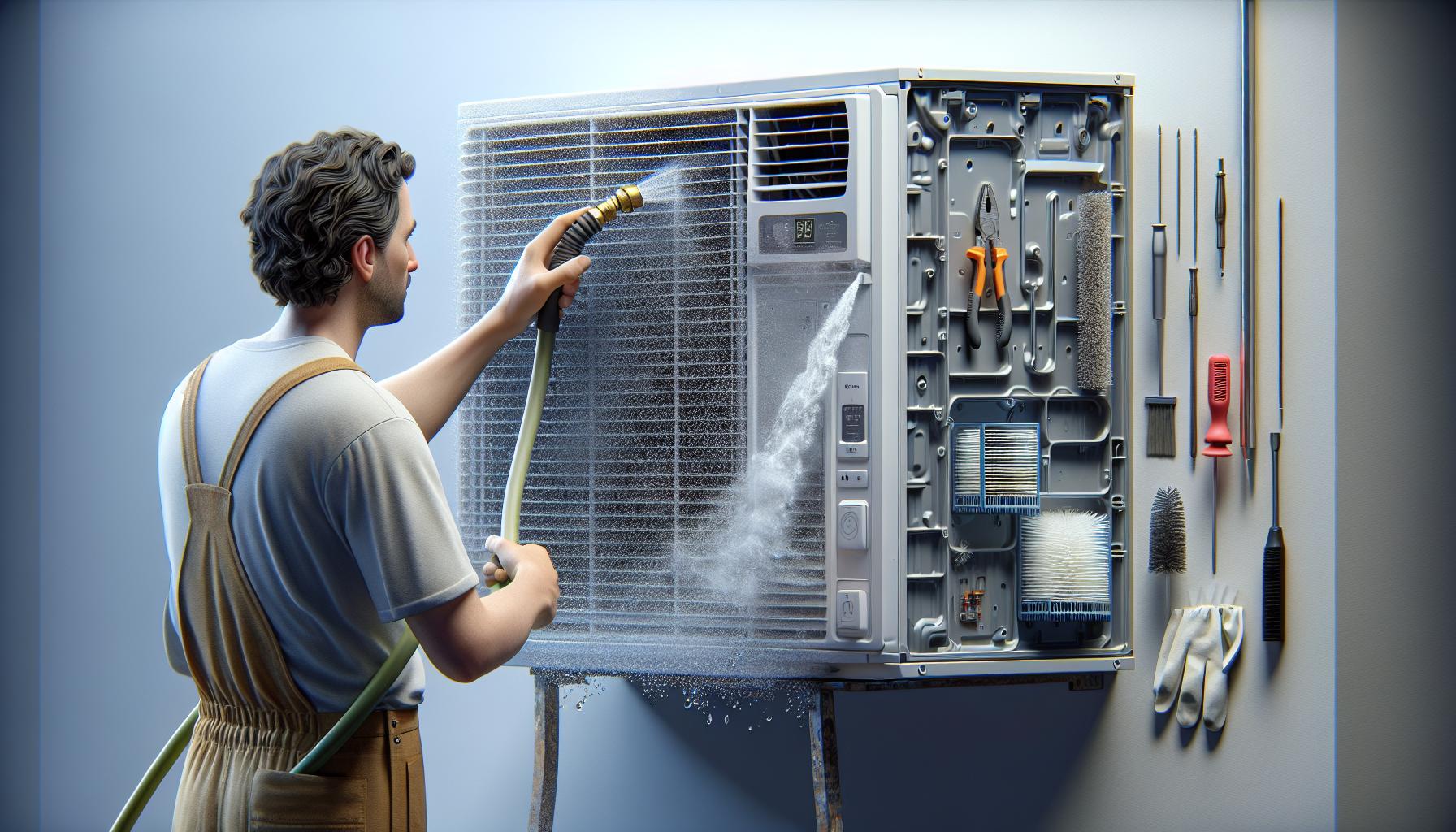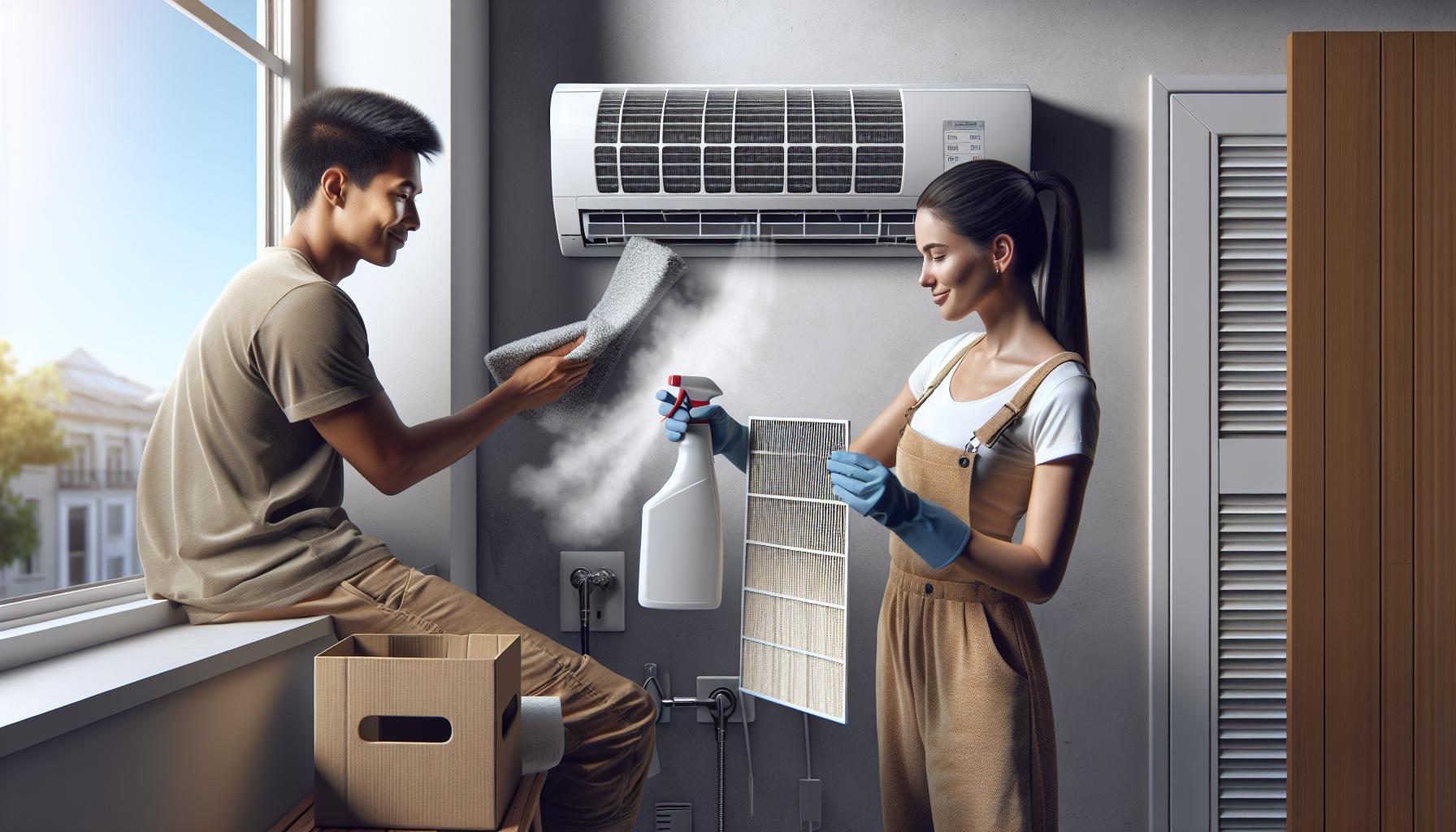Facing the heat without an air conditioner can be tough, but what about the cost of staying cool? Understanding the ins and outs of air conditioner expenses is crucial before you make a purchase or upgrade. You’ll want to consider the initial outlay, energy consumption, and maintenance costs that all add up over time.
In this article, you’ll discover the various factors that affect air conditioner costs, including unit types, sizes, and efficiency ratings. We’ll also discuss how to balance your budget with your need for a comfortable home. Whether you’re installing a new system or looking to optimise your current one, you’ll find valuable insights to help you make an informed decision.
Factors That Affect Air Conditioner Costs
When you’re delving into the realm of air conditioners, it’s essential to grasp the elements that sway the price tag of these cooling systems. Unit Type, Size, and Efficiency Ratings are pivotal factors, each playing a distinct role in the final cost.
Unit Types and Their Impact
Firstly, consider the type of air conditioner you need. Choices range from Window Units to Central Air Conditioning Systems, each with unique features and price points:
- Window units are often more affordable and suitable for cooling single rooms.
- Split systems offer a balance of cost and efficiency for individual rooms or small homes.
- Central air conditioning systems come with a higher initial outlay but provide a comprehensive solution for larger spaces.
Importance of Size and Efficiency
Air conditioner sizes, measured in British Thermal Units (BTUs), directly correlate with the area they’re meant to cool. An improperly sized unit can lead to increased energy bills and wear on the system. Here’s a quick overview:
| Area (sq ft) | Recommended BTUs |
|---|---|
| Up to 150 | 5,000 |
| 150-250 | 6,000 |
| 250-300 | 7,000 |
| 300-350 | 8,000 |
| 350-400 | 9,000 |
| 400-450 | 10,000 |
| 450-550 | 12,000 |
| 550-700 | 14,000 |
| 700-1,000 | 18,000 |
Efficiency ratings, indicated by the Seasonal Energy Efficiency Ratio (SEER), are also critical. The higher the SEER rating, the less energy the unit consumes, leading to lower operating costs over time. Energy Star Certified air conditioners represent top-tier efficiency performance and can significantly reduce utility bills despite a higher upfront price.
Maintenance and Running Costs
Running and maintenance costs should not be overlooked. Regular servicing ensures peak performance and can prevent costly repairs. Some systems may require more frequent check-ups or have pricier filters, impacting the long-term running costs.
Types of Air Conditioning Units
When exploring air conditioning units, you’ll encounter a range of options each catering to different needs. Window air conditioners are a compact solution for single-room cooling, an economical choice both in cost and operation. Installation is straightforward, allowing for easy setup in most standard windows.
Split system air conditioners, meanwhile, are divided into two key components: an outdoor unit and an indoor unit. They offer a discreet appearance and quieter operation compared to window units. Notably, split systems are perfect for cooling individual rooms or a specific area of your home without the need for ductwork.
Moving to a larger scale, central air conditioning systems are designed to cool multiple rooms or an entire building. These systems require an extensive network of ducts to distribute cool air but provide a uniform temperature throughout larger spaces. Central air units are highly efficient and can include advanced air filtration systems, enhancing indoor air quality.
For spaces without existing ductwork, ductless mini-split systems serve as an alternative. They combine the benefits of split system air conditioners with the advantage of targeted cooling in multiple zones, each controlled independently.
Lastly, portable air conditioners offer mobility and flexibility, allowing you to move the unit from room to room as needed. Though not as efficient as fixed systems, they’re a viable option for temporary or immediate cooling needs.
Each type of air conditioner presents unique installation, maintenance, and running costs. Considering your space requirements and budget will guide you towards the ideal unit for your needs.
- Window air conditioners: Economical, easy installation
- Split system air conditioners: Quiet, ductless
- Central air conditioning systems: Efficient, improves air quality
- Ductless mini-split systems: Targeted cooling, independent control
- Portable air conditioners: Mobile, flexible
Knowing these differences, you’re better equipped to make an informed decision about which air conditioning unit fits your specific circumstances.
Choosing the Right Size for Your Air Conditioner
When you’re about to invest in an air conditioning system, selecting the correct size is crucial for optimizing performance, efficiency, and cost. An oversized AC unit can result in excessive humidity and energy wastage, while an undersized system has to work harder, increasing your utility bills and potentially shortening the lifespan of the equipment.
To determine the ideal size, professionals use a calculation known as the British Thermal Unit (BTU) rating. The rule of thumb is that an area of 150 square feet requires an air conditioner with a capacity of approximately 5,000 BTUs. This scales up depending on the area you need to cool.
Here’s a quick reference for typical room sizes:
| Room Size (sq ft) | BTU Capacity Needed |
|---|---|
| Up to 150 | 5,000 |
| 150 – 250 | 6,000 |
| 250 – 300 | 7,000 |
| 300 – 350 | 8,000 |
| 350 – 400 | 9,000 |
| 400 – 450 | 10,000 |
| 450 – 550 | 12,000 |
| 550 – 700 | 14,000 |
| 700 – 1,000 | 18,000 |
| 1,000 – 1,200 | 21,000 |
| 1,200 – 1,400 | 23,000 |
| 1,400 – 1,500 | 24,000 |
| Over 1,500 | 30,000+ |
To fine-tune your selection, also consider factors like ceiling height, local climate, insulation quality, sun exposure, and the number of occupants. For example, if you have high ceilings or live in a very hot climate, you’ll need more cooling power, which means a higher BTU rating.
Installing the perfect-sized air conditioner leads to more consistent temperatures, lower humidity levels, and optimal energy consumption. It’s worth getting a professional assessment to ensure you’ve accounted for all variables in your specific location. This small upfront cost can save you significant money and discomfort in the long run.
Understanding Efficiency Ratings
When delving into air conditioner costs, it’s crucial you grasp the significance of efficiency ratings, which directly influence both the upfront price and the long-term operational expenses. Seasonal Energy Efficiency Ratio (SEER) and Energy Efficiency Ratio (EER) are the key metrics to keep an eye on.
The SEER rating measures the cooling output during a typical cooling-season divided by the total electric energy input during the same period. As of 2021, the minimum standard SEER rating is 13 for air conditioners, but models may range up to a 21 SEER rating or more. The higher the SEER, the more efficient the air conditioner, leading to reduced energy bills.
EER, on the other hand, calculates the efficiency at peak operating conditions. This figure gives you a snapshot of your air conditioner’s efficiency during the hottest days. A higher EER means better performance when the heat is relentless but also generally comes with a higher price tag.
Investing in a unit with a higher SEER or EER rating translates to significant savings on energy costs over time. For example, a jump from a 13 to a 16 SEER rating can save you approximately 30% on your cooling expenses annually.
Consider the following when evaluating SEER and EER ratings:
- The climate in your area: Hotter regions benefit more from high SEER units.
- Energy costs in your locality: Higher energy prices make high-efficiency units more cost-effective.
- Usage patterns: If you use your air conditioner frequently, efficiency ratings are especially critical.
Remember, while a unit with a higher SEER or EER rating may have a steeper initial cost, the investment can pay off through lower utility bills and enhanced comfort in your home. Always compare the long-term operational savings against the upfront costs to make an informed decision.
Initial Costs of Air Conditioners
When you’re in the market for a new air conditioner, the upfront costs are a crucial aspect to consider. These initial expenses not only cover the price of the unit itself but also include installation fees, which can vary significantly based on a number of factors. Brand, model, size, and the complexity of your installation all play a part in the overall cost.
On average, the price for a central air conditioning system ranges from £2,500 to £7,000, including installation. However, if you’re opting for a window unit or a portable air conditioner, you’ll be looking at a more affordable range of £150 to £500. It’s worth noting that the type of air conditioner you choose should align with your needs and the specific requirements of your living space.
- Central Air Conditioning Systems:
- Window Units:
- Portable Air Conditioners:
Remember to factor in potential rebates and tax credits. Certain energy-efficient air conditioner models might qualify for financial incentives, which can noticeably reduce your upfront costs. Always check with local schemes and energy programs for eligibility, as these can lead to substantial savings.
Finally, it’s critical to ensure that your air conditioner’s capacity matches the size of the area you wish to cool. An undersized unit will be inefficient, while an oversized one can lead to increased humidity levels and also contribute to higher initial costs. Consulting with an HVAC professional can help you determine the most cost-effective solution for your needs.
Energy Consumption and Operational Costs
When you’re sizing up the long-term value of an air conditioner, the operational costs are as crucial as the initial price tag. Energy consumption directly impacts your monthly utility bills. It’s worth noting that newer models have greater energy efficiency compared to older units, which could lead to substantial savings over time.
SEER Ratings: The Seasonal Energy Efficiency Ratio (SEER) rating of an air conditioner is a key indicator of its energy efficiency. A higher SEER rating means better energy efficiency and lower operational costs. For example, upgrading from a SEER rating of 9 to 14 can potentially save you around 35% of the cooling costs.
Here’s a simple breakdown of potential savings with different SEER ratings:
| SEER Rating | Estimated Savings (%) |
|---|---|
| 9 to 14 | 35 |
| 10 to 15 | 40 |
| 12 to 16 | 33 |
Remember that these percentages can vary based on the specific model and your usage patterns. But the trend is evident – more efficient air conditioners lead to better cost savings.
Maintenance and Longevity: Regular maintenance is non-negotiable if you want to keep your air conditioner running efficiently. Neglecting filters, coils, and fins can cause the unit to work harder and increase energy costs. Conversely, well-maintained units typically have a longer operational life, which defers the need for replacement and further optimizes your investment.
To ensure that your air conditioner remains a cost-effective feature of your home, make energy efficiency a priority. Select a model with a higher SEER rating, stay on top of maintenance, and watch your energy bills decrease over time. Always consult with an HVAC professional to get a tailored assessment of your needs and the potential operational costs for your specific situation.
Maintenance and Repair Costs
When you invest in an air conditioner, there’s more to consider than just the initial purchase price. Maintenance and repairs can add significantly to your total cost of ownership.
Routine Preventative Maintenance
Routine maintenance typically involves:
- Changing or cleaning air filters every 1-3 months
- Inspecting coils and fins annually
- Checking refrigerant levels and system pressures
Failing to perform these tasks can lead to decreased efficiency and potentially higher repair costs down the line.
Average Repair Costs
The cost of repairs can vary widely depending on the issue at hand. Here’s a breakdown of average costs you might encounter:
| Repair Type | Average Cost Range |
|---|---|
| Refrigerant leak | £200 – £1,500 |
| Compressor repair | £100 – £600 |
| Electrical issues | £75 – £625 |
| Fan motor replacement | £100 – £500 |
Remember, these prices are averages and can differ based on your location and the specifics of your AC unit.
Regular maintenance is often much less costly than unexpected repairs. Signing up for a maintenance contract with a local HVAC provider typically means lower costs for preventative care and priority service, saving you money and hassle in the long run, while ensuring that your air conditioner performs at its best during those hot summer months. It’s crucial to align with a reputable service provider to protect your investment and keep your home comfortably cool without the worry of sudden breakdowns.
Balancing Your Budget and Comfort Needs
When selecting an air conditioner, aligning your financial constraints with the desire for comfort is paramount. Engage in upfront planning and long-term thinking to achieve the best of both worlds.
Air conditioners with higher SEER ratings typically carry a larger initial price tag. However, investing in energy-efficient units can reduce your monthly utility bills. For example, upgrading from a standard 10 SEER to a 16 SEER model could save you up to 60% on your cooling expenditure.
Consider the size and layout of your home, as they are critical in choosing the right air conditioner. An incorrectly sized unit will not only fail to maintain comfort but will also lead to increased running costs. A unit that is too large cycles on and off more frequently, which can shorten its lifespan. One that’s too small will struggle to cool your space, operating continuously and thereby, hiking up your energy bills.
Explore financing options or rebates that may be available for high-efficiency air conditioner models. Many energy suppliers offer incentives for installations that promote energy conservation. These rebates could significantly offset the initial costs, thus, balancing your budget while you benefit from enhanced comfort and reduced energy consumption.
By choosing a tailor-made maintenance contract, you’ll ensure that your air conditioner remains in optimal condition. Regular maintenance prevents costly repairs and prolongs the life of the unit, maximising your investment. Providers often include priority service and discounted rates for contract holders, offering peace of mind without breaking the bank.
Opt for a programmable or smart thermostat to complement your air conditioning system. Such devices allow precise control of indoor temperatures and can lead to additional savings by automating your cooling needs based on your lifestyle patterns.
Incorporating these strategies ensures your air conditioning choice is both cost-effective and comfortable. Avoid the short-term temptation of lower-priced options that may not meet your comfort requirements or lead to higher bills in the long run. Prioritise your comfort without neglecting the financial implications for a satisfactory air conditioning experience.
Optimizing Your Current Air Conditioning System
Optimizing your air conditioning system can lead to significant energy savings and improve the overall performance of your unit. Regularly replacing or cleaning air filters can lower your air conditioner’s energy consumption by up to 15%. Dirty filters obstruct airflow and reduce system efficiency, so keeping them clean is crucial.
Sealing cooling ducts is another vital step in system optimization. Properly sealed and insulated ducts can enhance your system’s efficiency by as much as 20%. This involves checking for leaks, particularly in attics and basements, and using duct sealant or metal-backed tape to seal them.
To further enhance your air conditioner’s efficiency, try installing a programmable thermostat. This device can save you about 10% a year on your heating and cooling bills by automatically adjusting the temperature during periods when you’re away or asleep.
Annual professional maintenance is essential for keeping your system running at peak performance. A professional can check for issues like incorrect refrigerant levels or other potential problems that could hinder your air conditioner’s efficiency.
Lastly, consider upgrading to energy-saving accessories. For example, installation of a thermal expansion valve (TEV) or energy-efficient motors can help regulate the flow of refrigerant and improve airflow, contributing to reduced energy usage.
Remember, a well-maintained and efficient system not only costs less to run but also extends the lifespan of your unit, ensuring you stay comfortable for years to come.
Conclusion
You’ve seen how making smart choices and regular maintenance can drastically cut your air conditioner costs. By keeping up with simple tasks like filter changes and duct sealing you’re setting yourself up for more savings and a longer-lasting system. Don’t forget that investing in a programmable thermostat and energy-efficient upgrades pays off by lowering your bills even further. Remember, an efficient air conditioner isn’t just about immediate benefits—it’s a long-term investment in your comfort and your wallet. So take control of your cooling expenses and enjoy a cooler, more cost-effective summer.
Related Posts:
- Understanding Central Heating and Cooling Systems…
- Heat Pump vs Gas Furnace: Costs, Lifespan &…
- Understanding HVAC System Replacement for Home…
- Maximise Warmth: Choosing Your New High Efficiency Furnace
- Understanding Heat Exchangers for Efficient Home…
- Understanding Geothermal Heating and Cooling for Homeowners




